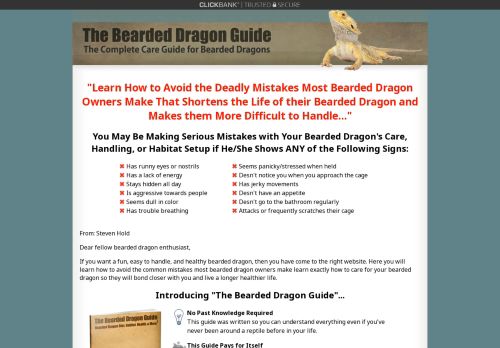
The Ultimate Bearded Dragon Guide: Everything You Need to Know
Introduction
Welcome to the ultimate guide on Bearded Dragons! Whether you’re a seasoned reptile enthusiast or a curious primary school student, this blog will cover everything you need to know about these fascinating creatures.
What is a Bearded Dragon?
Bearded Dragons, scientifically known as Pogona, are native to Australia and are popular pets worldwide due to their friendly demeanor and manageable size.
Appearance
Bearded Dragons are named for the spiny “beard” located under their chin, which they puff out when threatened or displaying dominance. They come in various colors, including shades of brown, red, yellow, and even green.
Habitat
In the wild, Bearded Dragons inhabit arid and semi-arid regions, such as deserts and scrublands. As pets, they require a similar environment, including a spacious terrarium with proper heating and lighting.
Feeding and Diet
Omnivorous Diet
Bearded Dragons are omnivores, meaning they eat both plant and animal matter. Their diet consists of insects like crickets, mealworms, and dubia roaches, as well as leafy greens, fruits, and vegetables.
Feeding Schedule
Young Bearded Dragons require more protein and should be fed insects daily, while adults can be fed a combination of insects and vegetables every other day.
Housing and Enclosure
Terrarium Setup
A proper terrarium setup is essential for the health and happiness of your Bearded Dragon. It should include a heat source, such as a heat lamp or ceramic heat emitter, as well as UVB lighting to mimic natural sunlight.
Substrate
Choosing the right substrate is crucial to prevent impaction, a common issue in Bearded Dragons. Suitable substrates include reptile carpet, paper towels, or non-toxic sand alternatives.
Behavior and Handling
Temperament
Bearded Dragons are known for their docile nature, making them excellent pets for beginners and families. However, it’s essential to handle them gently and avoid stressing them out.
Bonding
Regular handling and interaction can help strengthen the bond between you and your Bearded Dragon. Start with short handling sessions and gradually increase the duration as they become more comfortable.
Health and Wellness
Common Health Issues
While Bearded Dragons are relatively hardy, they can still experience health issues such as metabolic bone disease, respiratory infections, and parasites. Regular veterinary check-ups are essential for early detection and treatment.
Signs of a Healthy Dragon
A healthy Bearded Dragon should have clear eyes, smooth skin, and a good appetite. They should also be alert and active, basking under their heat lamp or exploring their enclosure.